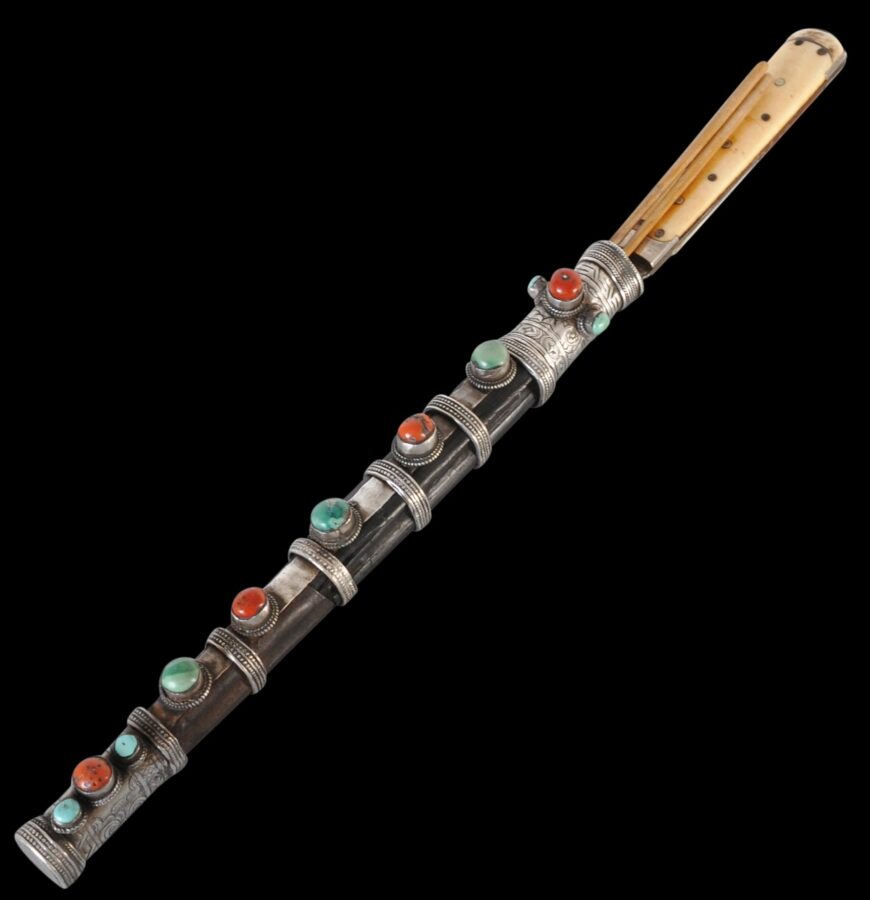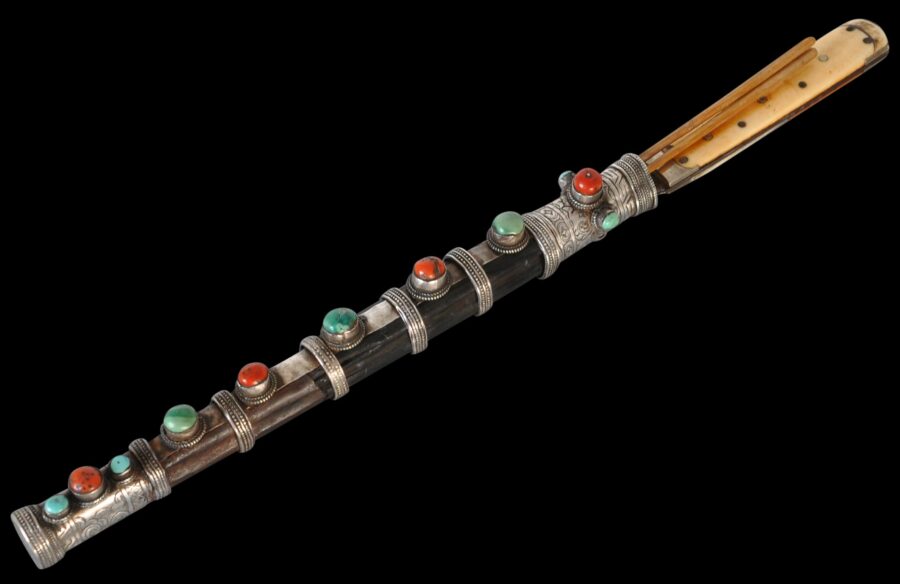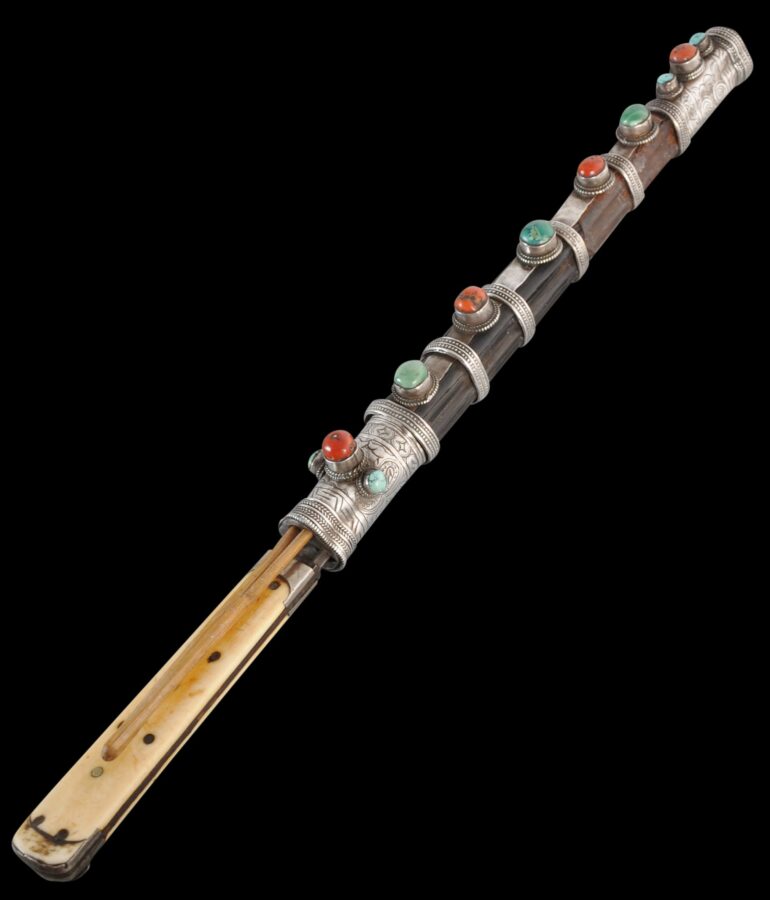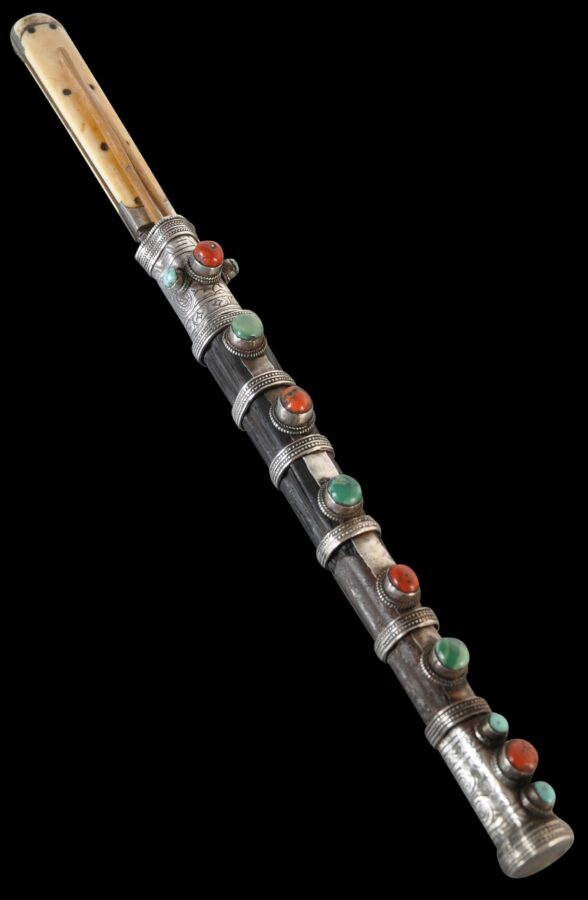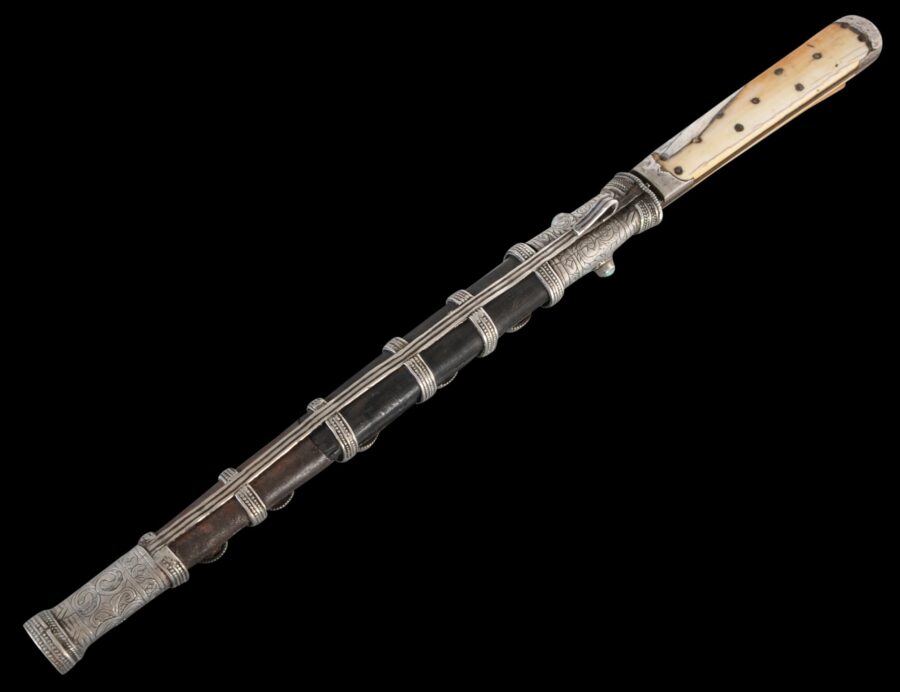This fine knife and sheaf or scabbard would have been worn by a nomad in western Tibet. The scabbard of wood, or horn, that has been partly clad in silver that is mounted with eleven alternating, good-sized coral and turquoise cabochons in high, silver box settings. The silver panels at each end are engraved with Himalayan scrollwork with engraved key-fret and Chinese ‘cash’ borders and applied woven and ‘pearled’ silver bands.
The stones and quality of the silverwork suggest that this set would have been reserved for use during important ceremonial occasions and festivals.
The reverse of the scabbard has a long strip of silver that terminates in a loop to allow the eating set to be suspended from the nomad’s belt.
The blade is of single-edged steel that comes to a point. It is overlaid on both sides with pairs of fine, sinewy dragon motifs.
The blade handle is encased with bone applied with brass rivets, and mounted with a silver cap. The bone casing has some loss and an old repair to the reverse.
The set includes a pair of wooden chopsticks. These might be later replacements; it isn’t clear. But they fit well.
The knife set has a superb patina; its significant age is obvious.
The knife is from the collection of Sir Christopher Ondaatje. Ondaatje is of Sinhalese and Dutch ancestry and was born in Sri Lanka (or Ceylon as it was known) in 1933. A businessman, writer and Olympian, he is the older brother of author Michael Ondaatje, author of The English Patient, among many works.


